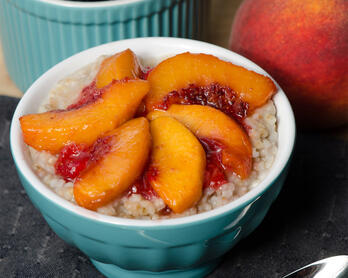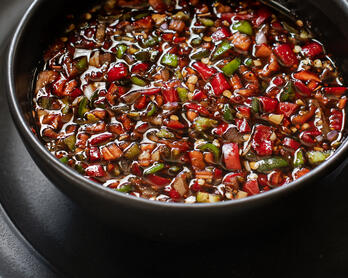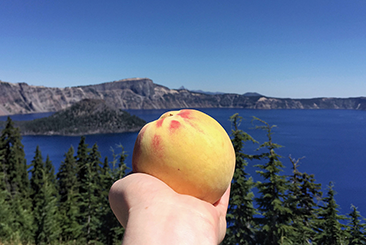Bread Class: Thoughts and Notes
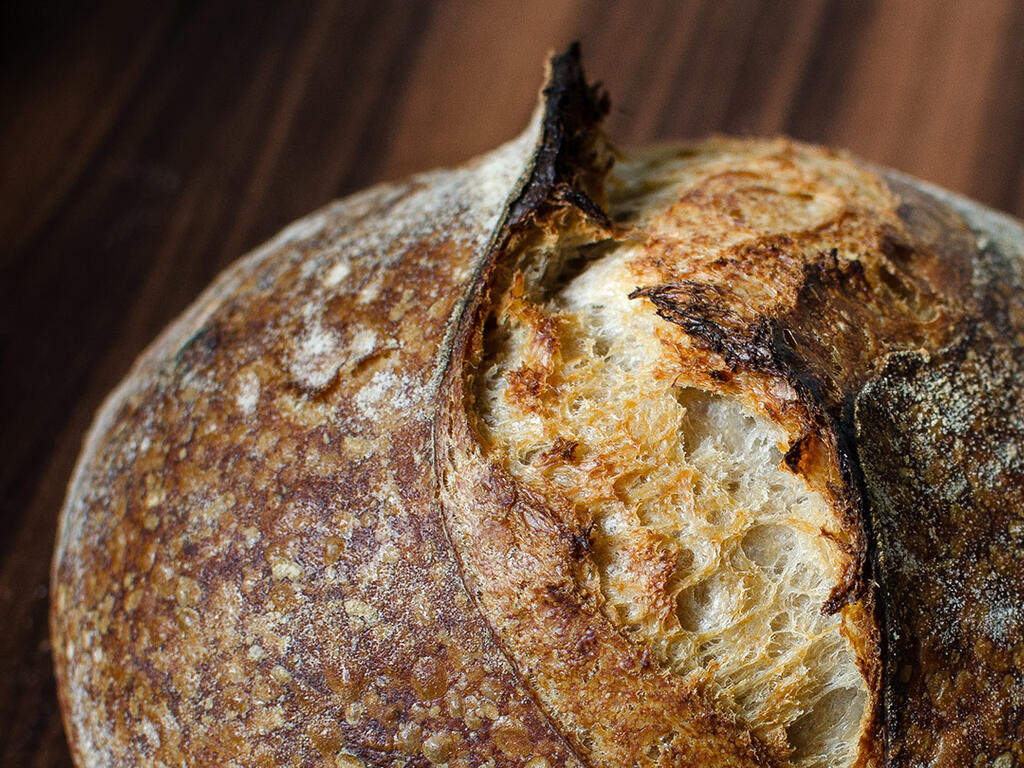
Loaf 30
I will happily get lost for hours in all things related to technology and cooking. As I sat in a recent bread class, it occurred to me how similar the two fields are. Am I going to code my way to a better sourdough loaf? Not really, no. But once you understand the fundamentals of baking and technology - the basic building blocks and rules - you can create anything. It's incredibly empowering and rewarding.
The bread class I attended was at Grist and Toll, an urban flour mill in Pasadena, and this post is basically a brain dump of thoughts and notes from that session. Graison Gill led the group and did a fantastic job of sharing his passion for the process. After the class, I approached loaves 51 and 52 with a deeper understanding of how to connect with my dough and bring out the best in it. Yes, I'm in a loving and committed relationship with Moomin the Starter. We're quite happy together.
Before I dive into the bread nerd zone, it's worth highlighting the work that Nan Kohler is doing at Grist & Toll. I use their wheat berries and flour and can't say enough about the incredible flavor it brings to my bread and cookies. And when I say flour, I don't mean your basic white or wheat. I'm talking about meticulously sourced Spelt, Edison, Sonora, Rye, and Red Fife. The newest addition to my pantry is Grist & Toll's Charcoal flour which I can't wait to experiment with.
Flour is one of the most important ingredients in baking. In bread-making, it's everything. This fact begs the question, why don't we know where our flour is coming from? I personally know the farmers who bring my eggs, berries, and herbs to market, but why isn't flour front and center in the farm-to-table movement? How is it being produced? How far is it traveling to reach me? The oversimplified answer is that the local sourcing and milling of flour is an art form that has gone out of style in the United States. Large agriculture companies grow and mill most of what we buy, and the product is usually a sad shadow of its former nutritious and delicious self. Fortunately, people like Nan are working to educate the amateur and professional cooking community about the benefits of properly sourced and milled flour. The flavor and performance of Grist & Toll's product is impressive so I highly recommend giving it a try. Their website lists some of the available varieties (items can be shipped) and I suggest calling to see what's in stock. There are occasionally "off-menu" goodies to be had.
If you'd like to learn more about Grist & Toll, there's an interview here or you can stream this longer interview while driving or riding the train. It's all fascinating stuff.
UPDATE: I highly recommend reading the New York Times article, Bread is Broken.
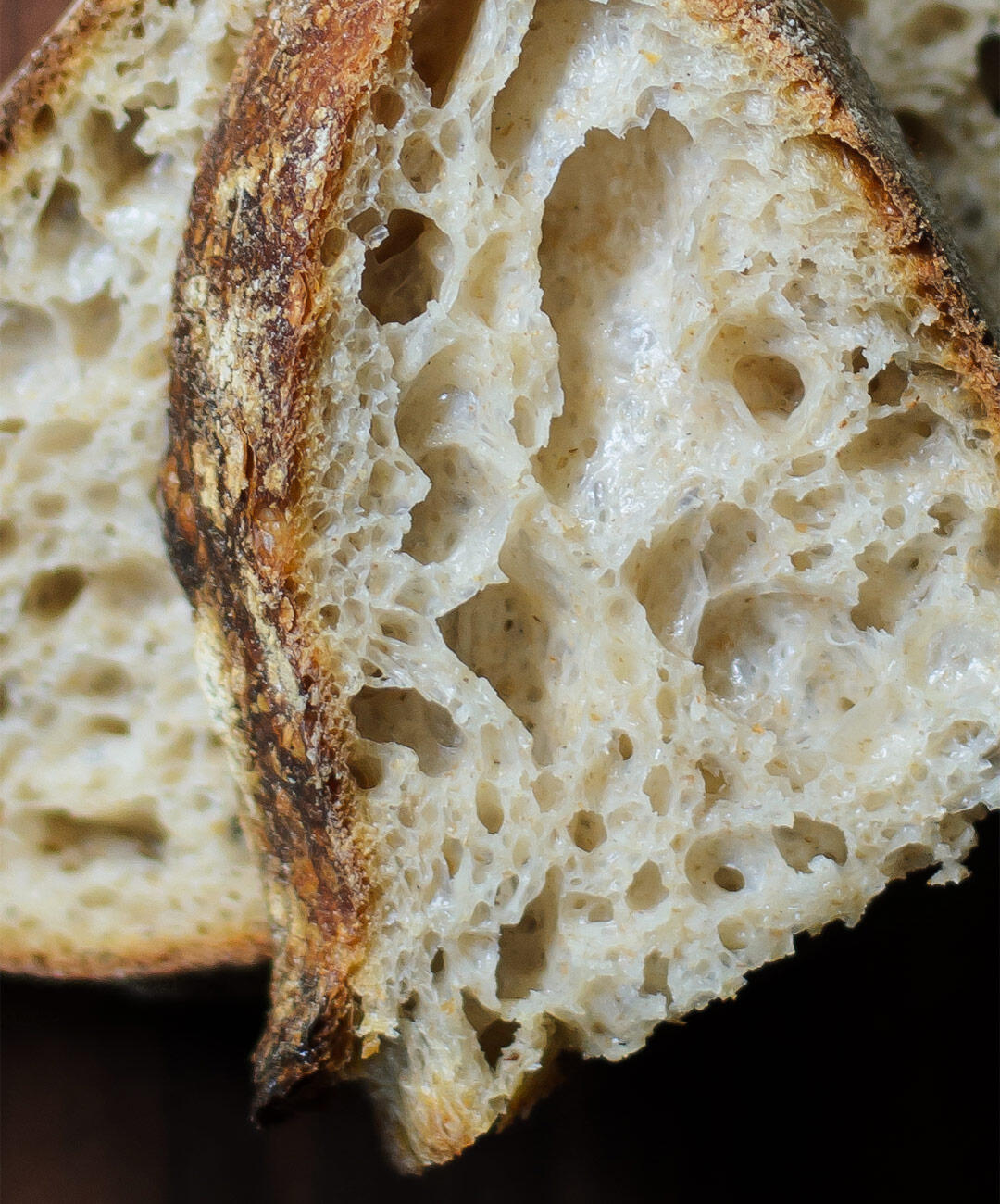
Loaf 63
Jazz and Bread
Graison told the class about a conversation he had with a local chef in New Orleans. After sampling Graison's bread, the chef commented that the product had "too much flavor". That's right, it was too delicious for his restaurant. Granted, that's not really fair of me to say. Most of us have been taught to treat bread like a vehicle for other ingredients rather than taking the time to focus on and appreciate the flavor of the actual grain. I shared this story with my husband and he came up with a great analogy:
"It's like the bassist in a rock band versus a jazz quartet. In a rock band, the bass generally blends into the background and you don't really notice it - it's there to support the stars. In a jazz quartet, all members are sharing the stage and making a real impact on the music. The bassist has to have 'flavor'."
Exactly. Bread should be an equal player in a dish. All of that being said, I personally don't prefer an intensely flavored pizza crust and there are certainly recipes where I want milder bread. But I don't think Graison's point was that every loaf should have a flavor that knocks you out of your chair. The issue is more that bread has lost its place at the table because the ingredients we put into it are often subpar. Food for thought.
How to Taste Bread
Like wine, the flavor of bread can be a little flat or it can be full and round with a lingering finish. We've become so used to the former that we often consider bread to be excellent simply because it's fresh.
Though I appreciate and enjoy the flavor of my bread, up until I took this class I didn't fully understand why I enjoyed it. What specifically was appealing to me? How did the build and flour combination speak to my palate? Though I'm still working to expand my bread vocabulary, I was much more analytical when evaluating what I liked about the taste and mouthfeel of loaves 51 and 52. It was eye-opening.
When tasting bread, pinch off a piece of the crumb without the crust. Hold it under your nose, squish the crumb a bit, and inhale the aromas. Then eat it. Similar to drinking wine, try to identify what you're tasting. Does the flavor fill your mouth? Is it nutty? Malty? And how is the finish? Is there a long lingering finish after you've swallowed the bread? Loaf 51, for example, had a nice long finish and a crumb that tasted like grape-nuts and crust that tasted of deeply browned waffles. Oddly specific, but now I have a good sense of what that particular blend and build yields. You'll start to notice that your flavor memory is quite strong when you take the time to properly evaluate each loaf. Taking notes also helps.
This post on the joy and science of tasting artisanal bread is a fun read.
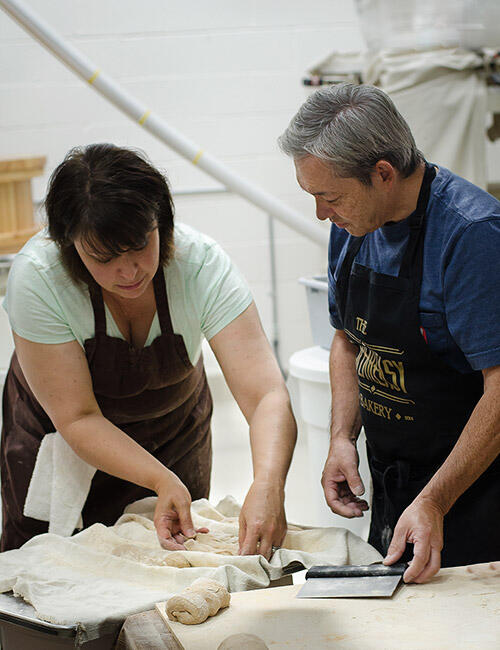
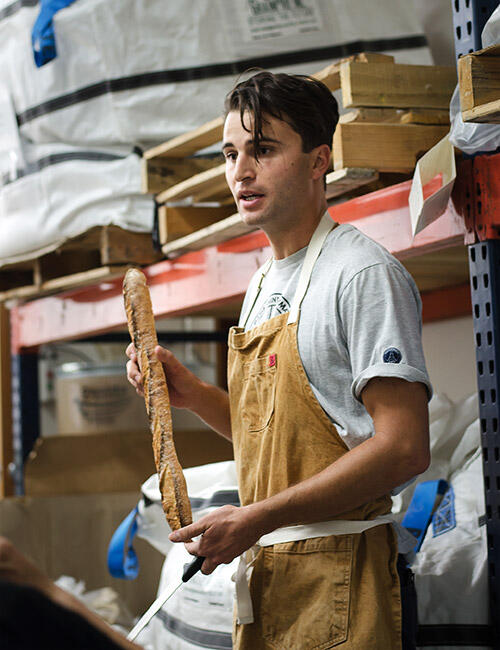
Nan of Grist and Toll // Graison Gill of Bellegarde Bakery
You are now entering the bread nerd zone...
DDT, Water Temperature, and Math
What temperature should your water be when mixing bread dough? That's a question I never thought to ask since I've always used the Tartine approach of 80 degrees. Well, my math-loving friends, there's an equation for this. Though it isn't new information for many experienced bakers, it's new to me so here we go.
DDT is the "desired dough temperature" during proofing. There are several factors that play into arriving at the DDT:
- Friction (The act of mixing the dough adds heat.)
- Ingredient Temperature (Home-milled flour can be upwards of 95 degrees.)
- Ambient Temperature
- Water Temperature (This is the factor you will need to adjust accordingly.)
To determine the water temperature, you first want to know what your DDT is. For sourdough, it's around 76-80 degrees. Let's go with 78. And for the sake of this example, I'm going to insert some numbers:
- Friction - 1 degree (Hand mixing doesn't add all that much heat.)
- Ingredient Temperature - 71 degrees
- Ambient Temperature - 75 degrees
Equations
- DDT (Desired Dough Temperature) * 3 = X
- X - (Friction + Ingredient Temp + Ambient Temp) = Water Temperature
- 78 * 3 = 234
- 234 - (1 + 71 + 75) = 87
So... The water you add to your mix should be 87 degrees to reach the DDT of 78 based on the contributing factors in the above example. Boom. Math skillz. Hopefully I have this right. If I don't, then...Boom. Math is hard.
DDT is an ideal number but isn't always attainable. For loaf 52, I turned the A/C on after mixing everything together and found that the dough temperature dropped to 74-75. Not the end of the world, but it's important to measure your dough temp from time to time so that you understand how it behaves in different environments. Also, turn the A/C on before mixing. Note to self.
Are We There Yet?
I'm very happy with the bread that comes out of my oven, but the true art is in knowing exactly when the loaf is ready to bake. When has it proofed just enough but not too much? These are the tips I gathered from the class:
Take a wet finger and gently press on the dough.
- An impression with a relatively quick spring means the dough can go a little longer. You will feel the tightness in the bread at this stage.
- An impression with gentle spring is ready.
- An impression that doesn't move much means you have probably gone too far and should bake right away.
- It's better to bake slightly under-proofed dough than over-proofed dough since the latter will deflate. Why does it deflate? The yeast is exhausted and simply can't go on. Sad times.
Sourdough Starter Maintenance
Graison mentioned that he refreshes his 80%-hydration levain twice a day at Bellegarde Bakery. In the 48 hours leading up to a bake, I've also found that I get the best results when feeding my starter in 12-hour increments. My post about building and maintaining a sourdough starter is here.
Inclusions
Goat cheese, olives, and rosemary are all examples of additions or "inclusions" in bread baking. Graison's rule of thumb is that inclusions shouldn't exceed 8% and even then you may want to pull them back. His approach to bread is centered around the character of the grain rather than the flavor of a cheese or herb. I'm inclined to agree with him on this point. You can flavor a loaf of bread without turning the grain into a backup singer. Though 8% is not a firm rule, it's helpful to have a benchmark when developing a recipe.
Milling Flour and Temperature
How hot is too hot when milling flour at home? I've noticed that my flour comes out at around 95 degrees. According to Nan of Grist & Toll, the bogeyman temperature is 120 degrees. Once you hit 120, the natural enzymes in the flour will start to break down. Some websites suggest refrigerating the berries before milling. Does that introduce unwanted moisture? I'm not sure and will have to do some more research.
Final Shape Tension
I asked Graison if hydration impacts how much tension you want with the shaped dough. He said you generally want tension to be the same, but how you get there is different depending on how hydrated and delicate the dough is.
Woodstock for Bread Nerds
The Bread Lab at WSU hosts a conference each August called The Grain Gathering. They build mills, laminate whole grain dough, bake bread, and dive deep into the world of wheat. It's summer camp for bread nerds. Yes, I would like to go to this magical place. I shall arrive with bells on...my apron. If you're interested in information, sign up for e-mails here.
That's all I have to say about that.

